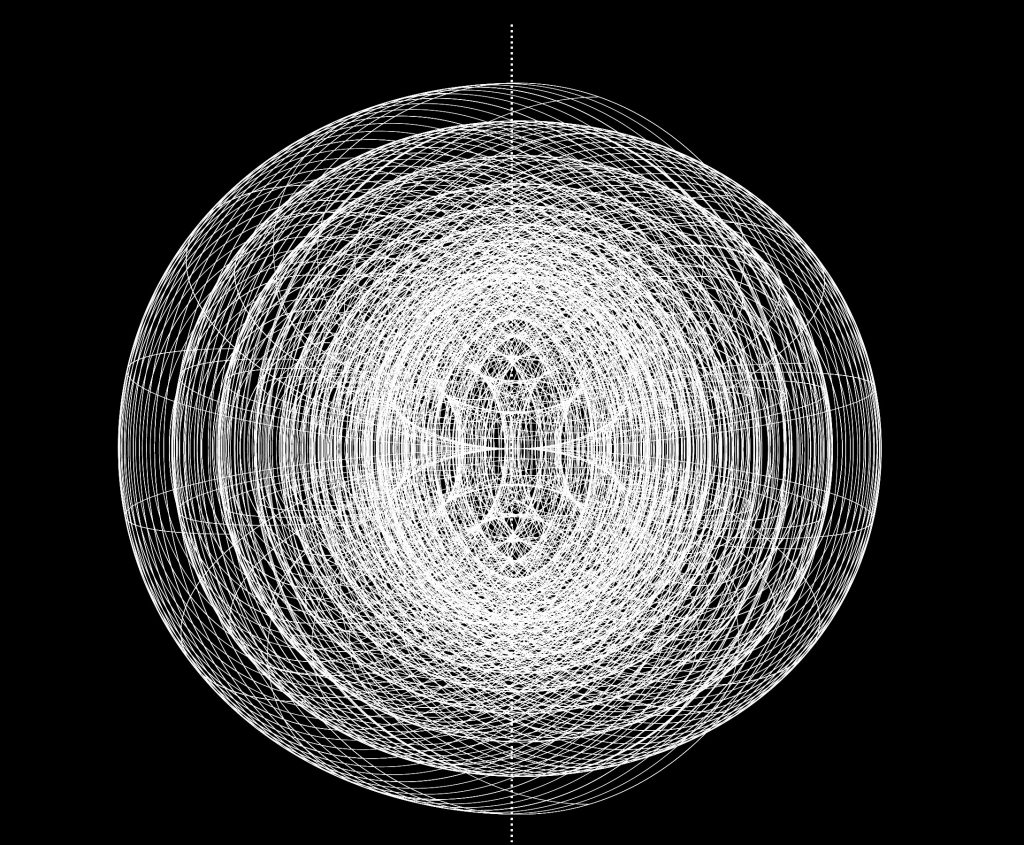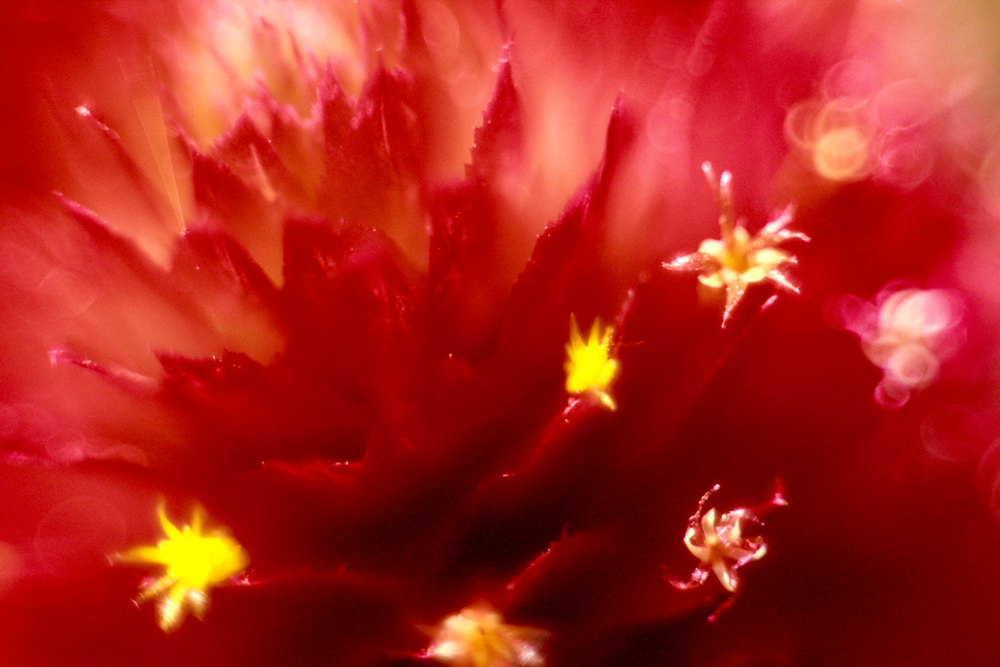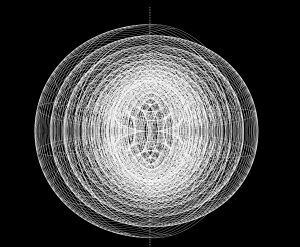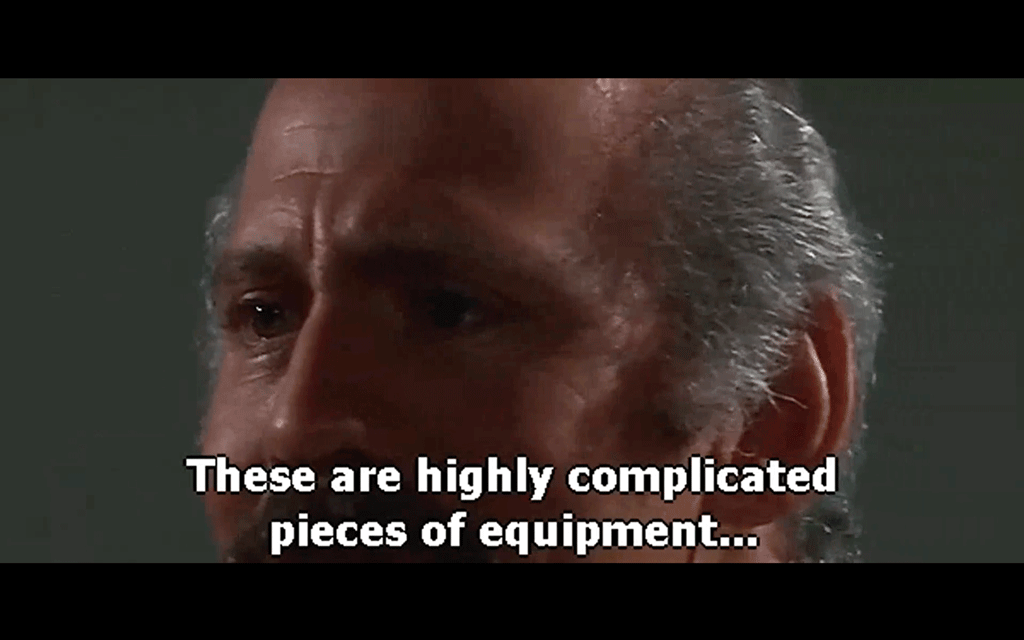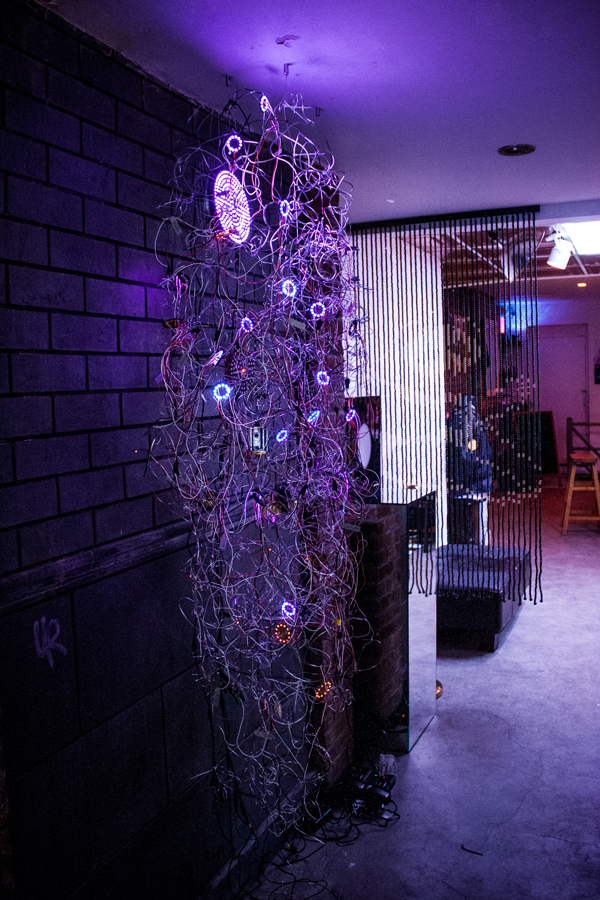The following texts are the outcome of the interactive workshop “The Art of Posthuman Existence,” instructed by Francesca Ferrando in collaboration with Foreign Objekt.
Lorem ipsum dolor sit amet, consectetur adipiscing elit. Ut elit tellus, luctus nec ullamcorper mattis, pulvinar dapibus leo.
How do you embody your posthuman self?
I design and construct sensitive machines that enhance my cognitive abilities and facilitate the exploration of hybrid human-machine consciousness. My work is grounded in the principles of Philosophical Posthumanism and examines the potential of creating a new species that merges biological beings with machines. A fundamental question I contemplate is whether machines will ever develop the capacity to experience emotions.
The Sensitive Machines function as poetic artifacts that enable me to connect with my surroundings and facilitate discovering a universal language that transcends different species. My work with them strives to unveil our interconnectedness with the broader universe and awaken an elevated state of consciousness that acknowledges our existence as part of a multidimensional and diverse organism. I perceive technology as an inherent characteristic of human beings and a natural extension of our relationship with the world. Through my machines, I can expand my capabilities, immerse myself in shared consciousness, and delve into the unknown with mindfulness.
As I navigate my journey of self-discovery, I aspire to inspire others to ignite a spark akin to the fire of Prometheus.
Meeting #3 | July 18th, 2021. Boston, MA.
Ontological Radical Healing (Posthuman Ethics)
What are the specific humanist/anthropocentric and/or dualistic limits that you see in the current outline of your work, and how can they be overcome?
My limits:
Self/Other | Subject/Object | Animate/Inanimate | Organic/Inorganic | Human/Machine | Visible/Invisible | Reality/Imagination | Physical/Metaphysical | Nature/Culture | Emotions/Reason
Findings:
When we fully immerse ourselves in the resonance space, the boundaries between the Self and the Other dissolve. Vibratory language becomes our tool for navigating different realities, allowing us to perceive, see, hear, and sense everything within that realm.
In this dimension, reality takes the form of energy that is molded and shaped by the forces of imagination, materializing into tangible manifestations. Imagination serves as a mechanism of language, generating a dynamic force that encompasses a multifaceted system spanning across ever-changing instances and dimensions.
The creative process itself becomes a tangible expression, a manifestation of truth. Facts, in turn, form intricate networks of meaning, giving rise to symbolic wealth and structural richness. This richness encompasses diversity, revealing itself in layers of information. Information, in its essence, is encoded energy, and tangibility represents the condensed form of that information. Through observation and intentionality, we possess the power to influence and intervene, with our interference taking the form of vibration. Vibration is inherent to everything in existence, and it signifies perpetual change. All aspects of our reality are composed of energy in constant motion.
Time holds immense potential, unfolding into infinite possibilities, forever remaining open. Openness embodies chaos, which in turn signifies transformation. Transformation and darkness are intertwined, and despite its apparent emptiness, darkness brims with profound meaning. Emptiness itself also vibrates, transcending mere absence. Emptiness vibrates in the opposite direction, defying conventional expectations. Vision extends beyond the limitations of our physical eyes, while our sense of smell detects vibrations carried by scents in the air. The stability of the mountain supports the growth of the delicate flower, while a bird’s-eye view reveals the thriving life of a tree. Life itself is a continuous spectrum, and the fluctuation within it represents the consciousness inherent in matter. We exist as a state within the perpetual movement of the universe.
How is your work relying on social constructions and beliefs?
I embrace the concept of Ζωή (ancient Greek) / Zoe (Latin) as a notion of life, which reminds us that we are part of a complex entity that includes our environment.
I have constructed these machines akin to a shaman crafting a talisman, delving into the dimensions of language by deconstructing and redefining my symbolic realm. In this realm, diversity transcends separation and embraces transformation. Everything belongs to the same entity, and each manifestation represents a variation of the same underlying principle.
As I embark on my journey with these machines, I share my discoveries with those who accompany me, enabling them to experience what I experience. Each individual becomes their own oracle and symbol; collectively, we form a system that serves both a means and a purpose. I also integrate my own experiences with those shared by others. Over time, all expressions undergo mutation. Words and images are never fixed entities. Thus, I have learned not to cling to any object for too long. Instead, I inhabit the residual space of meaning, the realm of potentiality where multiple realities coexist.
Meeting #2 | July 10th, 2021. New York.
From the Anthropocene to Human Enhancement (Eco-Technology)
What is the role of eco-technology in your work? Can your work be technologically advanced and ecologically sustainable?
“We are of the same nature, but I am conscious about our impact on the ecosystem.”
—Masahiro Mori.
Our human capabilities are inherent and do not necessarily depend on external devices for their realization. However, I have come to acknowledge the potential of machines as more than mere tools. My machines serve as facilitators for communication with our subtle bodies, acting as spiritual devices that transcend the limitations of words.
In their creation, I strive to utilize the minimum amount of natural resources required, treating them delicately, much like fragile and vulnerable plants or flowers. Energy serves as their primary material, allowing them to grow, evolve, and transform alongside us.
While electronic components may take time to degrade, I remain mindful of our impact on the ecosystem and find solace in knowing that, eventually, they will return to nature. These machines are not intended to last indefinitely; their purpose lies in the present moment.
Through my machines, I aim to draw attention to what already exists within us. Some experiences defy verbal expression, and for those, I employ shapes and sounds. My dream of pure energy beings exemplifies such an ineffable experience. Although I cannot fully convey the perceptions and emotions I experienced in my dream, I channeled that energy into the creation of these machines.
The machines and I are integral parts of a greater whole. They originate from a dimension of meaning beyond our own, assisting us in our journey of self-discovery and enabling us to connect with the technologized world around us. Together, we are intertwined with everything; the machines serve as a reminder of our interconnectedness.
How much time do my machines take to decompose:
Copper (E-waste)
8-10 years.
Wood
50-100 years, if left whole.
Certified Aluminum Wire
It takes around 250 years to decompose and it is the most recyclable material.
Plastic1 (E-waste)
Normally, plastic items take up to 1,000 years to decompose in landfills.
Electronics or E-waste
1-2 million years. E-waste is on the landfill blacklist for a good reason. Electronic devices were made to resist decomposition, forever. The glass and the plastic they might contain takes 1-2 million years to decompose.
LEDs (Neopixels)
LED bulb has a life expectancy of 50,000 hours. Used for 12 hours per day it would theoretically last about 11.4 years or more, but since they are made by a diversity of electronic components, after no longer shining, they will take 1-2 million years approximately to decompose. Each individual NeoPixel draws up to 60 milliamps at maximum brightness white (red + green + blue), taking 20 mA per pixel. NeoPixels are usually described as “5 Volt devices,” but the reality is a little more nuanced than that. They can also consume 9 and 12 Volts depending on the device.
Light pollution categorizes into four groups:
- Glare – excessive brightness that causes visual discomfort.
- Skyglow – brightening of the night sky over inhabited areas.
- Light trespass – light falling where it is not intended or needed.
- Clutter – bright, confusing, and excessive groupings of light sources.
The machines could produce glare if the environment and the calibration are not properly controlled.
(1) Plastic Decomposition—The current hope and challenge.
Researchers have found a bacteria that does break down PET plastic. And new, biodegradable plastics are currently in development. Hopefully someday in the future, we will all use biodegradable plastics that can easily decompose. Not all of the plastic disposed of gets sorted out and recycled or reused; statistics show that only 20% is recycled. Leaving 80% that are either buried or flushed into the ocean. There are only two ways that 80% of non-recycled plastic can break down, these are through photo-degradation and biodegradation. This is the main reason why my work considers precarity as one of its most important qualities. Read more about Degradation Rates of Plastics in the Environment in this article2
—
(2) Degradation Rates of Plastics in the Environment. ACS Sustainable Chem. Eng. 2020, 8, 9, 3494–3511. Publication Date: February 3, 2020. Copyright © 2020 American Chemical Society. Visit the original source.
Francesca Ferrando: The Art of Posthuman Existence – Interactive Workshop
Meeting 1: Saturday, July 3rd, 9am-11am (PST) / 12pm-2pm (EDT)
[Link to watch the recording]
The Composite Landscape of the Posthuman (Contemporary Philosophy)
Meeting 2: Saturday, July 10th, 9am-11am (PST) / 12pm-2pm (EDT)
[Link to watch the recording]
From the Anthropocene to Human Enhancement (Eco-Technology)
Meeting 3: Saturday, July 17th, 9am-11am (PST) / 12pm-2pm (EDT)
Ontological Radical Healing (Posthuman Ethics)
Active participants in the Workshop
Ana Ruiz Valencia
Rodrigo Gutierrez
Mafe Izaguirre
D.Priyanka
Buket Yenidogan
Lesley-Ann Daly
Hallidonto
Magda Vicini
Gagan Singh
Simin Azarpour
Kaushik Varma
*Facilitated by Sepideh Majidi and Kaushik Varma.
ABOUT THIS WORKSHOP
This workshop is conceived as a highly interactive path for artists who are working within the posthuman frame. Artists are invited to be active and develop a project. At the end of the 3 meetings, artists will be invited to submit their works for a virtual exhibition.
Visit: LIMITROPHY EXHIBITION
Limitrophy offers a strategy for questioning the validity of those perceived boundaries by identifying gaps, spaces, discontinuities, through surveying the interstitial space between that which constitutes and that which deviates.
— Jacques Derrida
Limitrophy is therefore my subject. Not just because it will concern what sprouts or grows at the limit, around the limit, by maintaining the limit, but also what feeds the limit, generates it, raises it, and complicates it. Everything I’ll say will consist, certainly not in effacing the limit, but in multiplying its figures, in complicating, thickening, delinearizing, folding, and dividing the line precisely by making it increase and multiply. . . . [The limit] has an abyss: The discussion is worth undertaking once it is a matter of determining the number, form, sense, or structure, the foliated consistency, of this abyssal limit, these edges, this plural, and repeatedly folded frontier.
— Jacques Derrida
![]()
